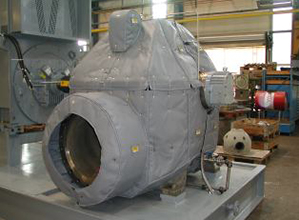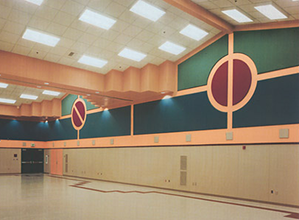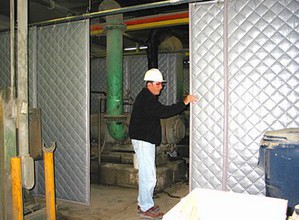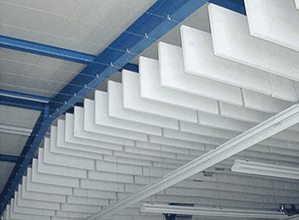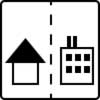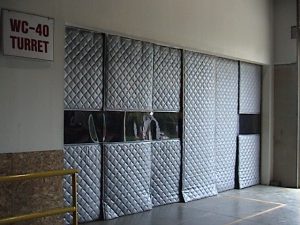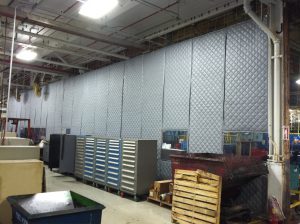Sound Blanket Noise Solutions
Sound Blankets are used in many industrial and construction applications for the reduction of unwanted noise from equipment and processes. Sound blankets can be constructed of different materials based on the acoustical goals and the environment the sound blankets will be used in. Because sound blankets are used in industrial and construction sites, they need to be very durable to withstand the rigors of these harsh environments.
Typically, industrial sound blankets are constructed with a fiberglass reinforced vinyl fabric. The fabric is quilted with an acoustical grade fiberglass in an industrial sewing machine that puts a diamond stitch pattern in the quilt to hold the fiberglass in place and keep it from settling in the blanket. The fiberglass can be nominally 1” – 4” thick. When the fiberglass goes through the quilting process, it is compressed and will “look” thinner than when it was raw fiberglass. For some models of sound blankets, another layer of fabric is sewn to the other side and all the edges are sewn and bound with edge binding. For these models of blankets, this will be the completed products. For other models, addition materials are added.
Mass loaded vinyl is added to the sound blankets to add mass and provide greater sound blocking performance. To the most popular industrial sound blanket models, added is a non-reinforced 1 pound per square foot mass loaded vinyl sound barrier is sandwiched between one layer of fiberglass and facing each side and bound. For exterior sound blankets and high abuse industrial sound blankets a one pound per square foot reinforced sound barrier is sewn to one side on the fiberglass and faced to form the finished product.
There are several different facing options:
- Standard fiberglass reinforced vinyl
- Exterior Grade Vinyl Coated Polyester 10 oz. per sq. yd.
- High Heat Silicone Impregnated fiberglass reinforced vinyl
- Non-Porous Scrim facing
For most applications mating Velcro is added to the vertical edges to mate to adjacent sound blankets and form a wall or enclosure. Grommets holes are placed on the top edge for suspension. The sound blankets can be attached to structure through the grommet holes with nylon zip ties or tie wire, self-tapping screws and washers, bolts nuts and washers or suspended with a hook and trolley onto roller track.
Benefits of using sound blankets for your noise control project.
- The blankets are very flexible in design and can be adapted to work in most any application
- They provide unprecedented accessibility to the equipment
- They are excellent at blocking and containing noise
- Very Durable
- Ease of installation
- Long product life
- Movable
- Reusable
- Cost Effective
Applications for the use of sound blankets
Industrial Sound Blankets are typically used to quiet one or more stand-alone machine that is very noisy.
- Air compressors
- Positive displacement blowers
- Vacuum Pumps
- Hydraulic Pumps, Fans and Blowers
- Dust Collection
- Plastic Grinding and granulators
- Vibratory bowl feeders
- HVAC units – Water Cooled Heat Pumps
Exterior Sound Blankets are for outdoor use and shed water easily and have UV inhibitors for years of service.
- Construction Site Noise
- Directional Drilling
- Grading and Site development
- Natural Gas Pipeline
- Transfer Pumps
- Chillers
- Condensing Units
- Gensets
The acoustical performance of sound blankets and what is the best way to reduce the decibel level. Sound blankets are very effective when used as a sound barrier. One common application is a wall of sound blankets between the noise source and the noise receiver. Best practice is to block line of side to the noise source with the sound blanket wall. You will want to position the wall as close to the noise source as possible and the wall height should be 2-4 feet above the height of the unit for the highest reduction. To achieve greater sound reduction, a sound blanket enclosure with four sides and roof around the noise source or if you can extend the wall all the to the ceiling deck and keep air gaps to a minimum.
Sound Blankets are an effective means to reduce the sound levels in your industrial or construction noise control project.
